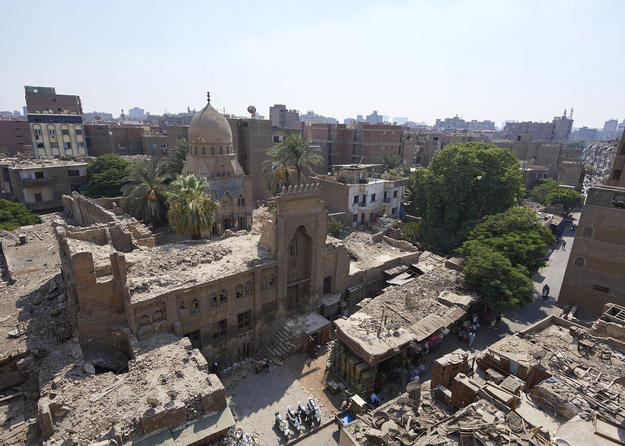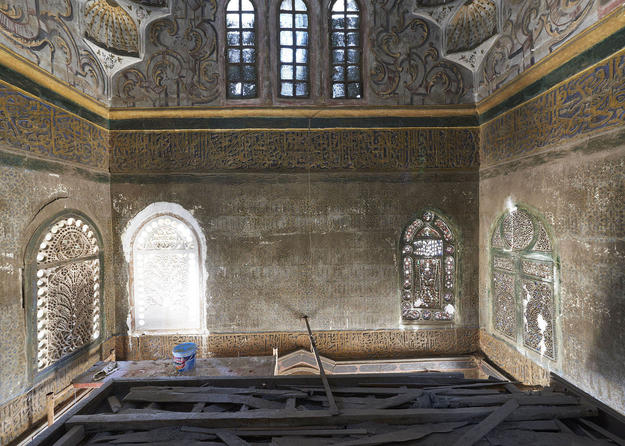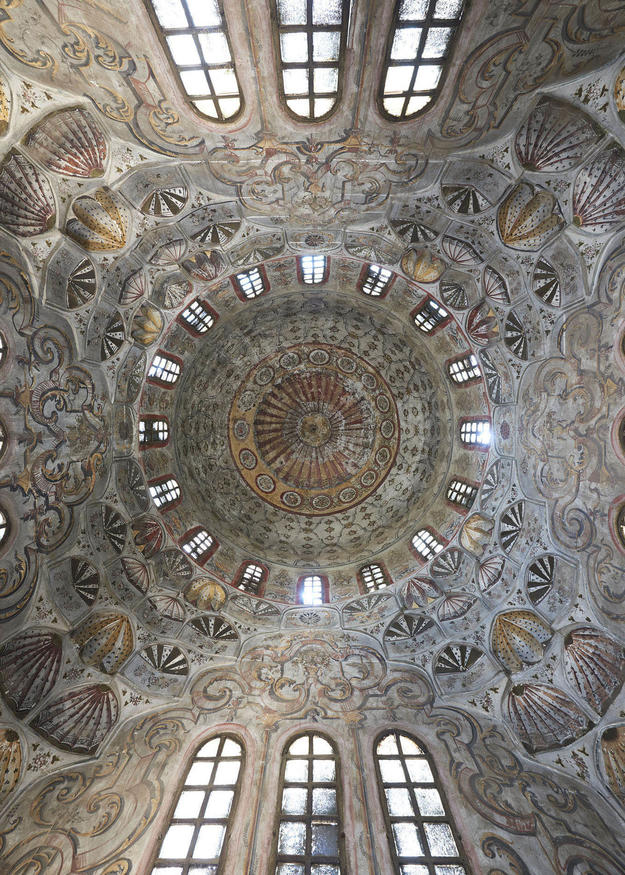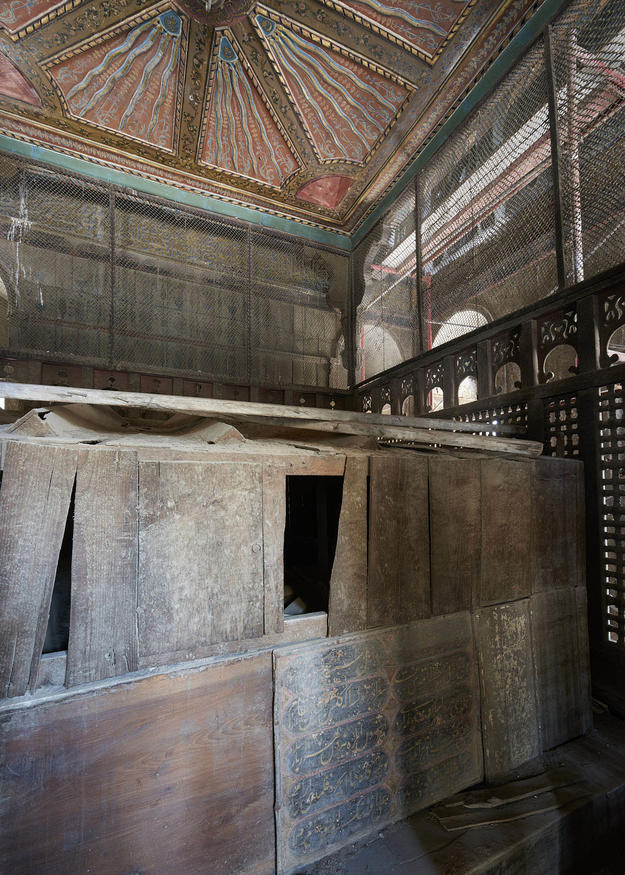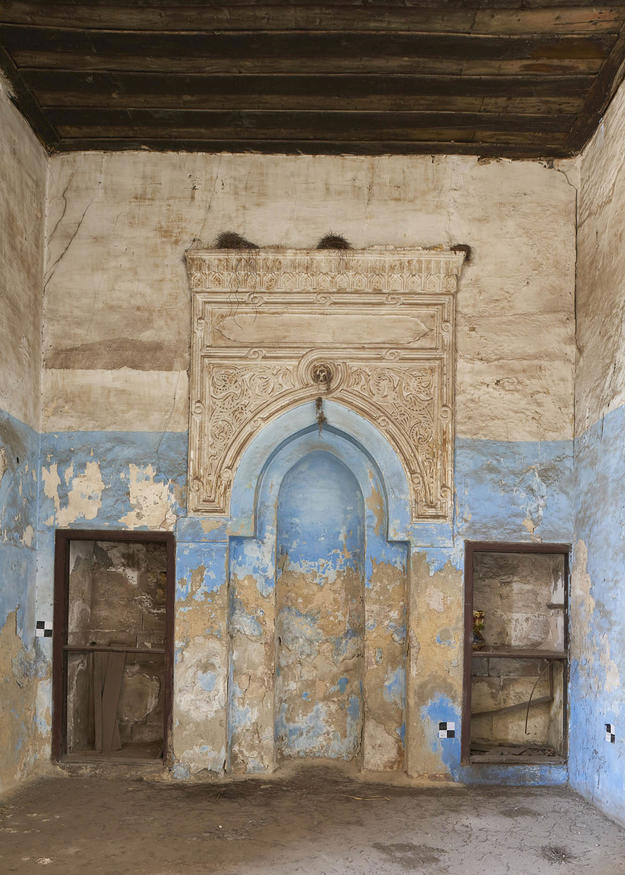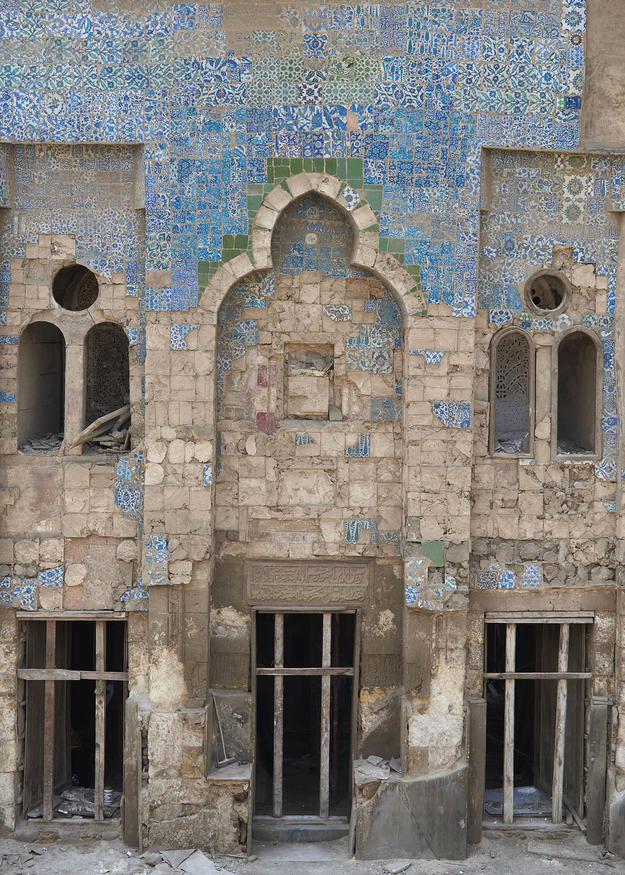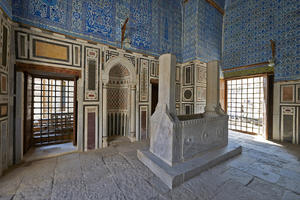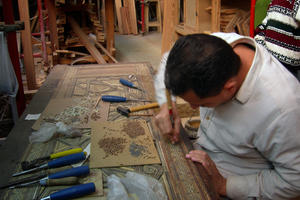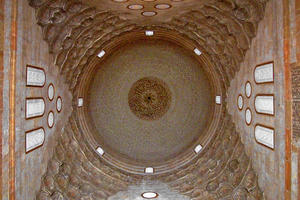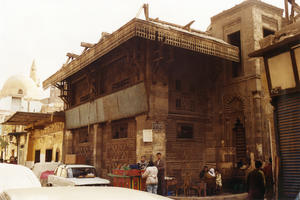Takiyyat Ibrahim al-Gulshani
Site and Significance
A Unique Complex in Cairo
The complex of al-Gulshani was the first religious foundation established in Cairo after the Ottoman conquest in 1517, and the first to be named a takiyyat, a Turkish-derived term for a residential religious complex, in its foundation deed. It was built between 1519 and 1524 by Ibrahim al-Gulshani, an influential Sufi shaykh from Azerbaijan whose life in Cairo bridged the period between Mamluk and Ottoman rule.
In contrast to most shaykhs who tended to build on the outskirts of the city, Ibrahim al-Gulshani built his religious complex in the heart of Cairo where the ruling political elite constructed monumental edifices. And unlike other contemporary or earlier Mamluk Sufi lodges in Cairo, al-Gulshani's complex comfortably accommodated both religious and secular functions. This mix resulted in an architecturally unique and diverse program that included residences for al-Gulshani's family and a selection of followers, retreat cells, a small mosque for devotees, a communal kitchen, commercial shops, and a domed mausoleum set on a raised courtyard where rituals and public gatherings took place. The grand mausoleum al-Gulshani built for himself was the centerpiece of the complex; its finely carved stone dome high enough for its crown to be admired from the street.
Our Involvement
A Need for Intervention
Following the 1992 Cairo earthquake, which caused a remarkable degree of destruction, the city's historic core was the subject of hundreds of restoration projects that breathed new life to its architecture. But the political unrest from 2011 to 2013 dramatically reduced restoration and conservation activities in Historic Cairo and fostered a wave of vandalism. Projects since that time were limited in scope, mainly conducted by independent conservation specialists in Cairo with approval of the Egyptian Ministry of Tourism and Antiquities (MoTA). As a result, the Takiyyat Ibrahim al-Gulshani complex lies in various states of ruin, a victim of financial limitations, earthquakes, looting, and changing religious administrative structures.
2018 World Monuments Watch
Recent interest in its rehabilitation on behalf of local authorities signals a positive shift for the complex. With the site's inclusion on the 2018 World Monuments Watch, World Monuments Fund (WMF) seeks to launch a dialogue about the restoration and future use of Takiyyat Ibrahim al-Gulshani as a case study for rehabilitating other sites of its type.
Project Activities to Date
WMF supported the initial research and documentation of Takiyyat al-Gulshani. As the first step in envisioning a viable future use for the site, the project team reviewed historic reports, studies, drawings, photographs, and archival information to more accurately assess its condition. Based on these initial activities, the project shifted to a series of scientific investigations that improved background knowledge, assessed structural circumstances, mapped conditions, and assembled a comprehensive set of architectural documentation. Together, these documents and associated trainings provide an opportunity for WMF to help MoTA define a conservation action plan for the complex, one that explores different possibilities for its adaptive reuse.
Current Activities at Takityyat al-Gulshani
The second phase of the project focuses on physical interventions to conserve and restore the exterior of the site’s most outstanding feature, al-Gulshani’s mausoleum, and the surrounding raised courtyard. Working in coordination with WMF, MoTA staff and local conservation professionals will acquire experience and perspectives that may extend to other projects designed to safeguard Historic Cairo. In addition to utilizing Takiyyat al-Gulshani’s conservation as a classroom, WMF is creating partnerships with educational institutions, which will allow interns from local universities to work at the complex with WMF staff.
Learn More
World Monuments Fund safeguards cultural heritage around the globe, ensuring our treasured places are preserved for present and future generations.
Sign up for our newsletter to receive regular updates on our projects, stories from the field, upcoming events, and more!
![]()
World Monuments Fund's work at Takiyyat Ibrahim al-Gulshani has been made possible, in part, by support from the U.S. Ambassadors Fund for Cultural Preservation, U.S. Embassy Cairo, ILUCIDARE, The International Music and Art Foundation, and The Sidney J. Weinberg, Jr. Foundation.

